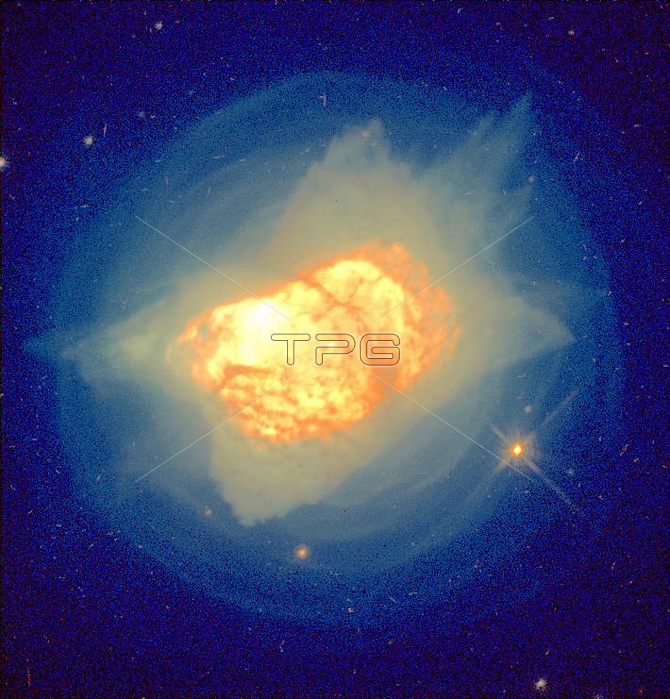
This NASA Hubble Space Telescope image of planetary nebula NGC 7027 shows remarkable new details of the process by which a star like the Sun dies. New features include: faint, blue, concentric shells surrounding the nebula; an extensive network of red dust clouds throughout the bright inner region; and the hot central white dwarf, visible as a white dot at the center. When a star like the Sun nears the end of its life, it expands to more than 50 times its original diameter, becoming a red giant star. Then its outer layers are ejected into space, exposing the small, extremely hot core of the star, which cools off to become a white dwarf. The nebula is a record of the star's final death throes. Although stars like the Sun can live for up to 10 billion years before becoming a red giant and ejecting a nebula, the actual ejection process takes only a few thousand years. The NGC 7027 photograph is a composite of two Hubble images, taken in visible and infrared light, and is shown in false color.
| px | px | dpi | = | cm | x | cm | = | MB |
Details
Creative#:
TOP22314480
Source:
達志影像
Authorization Type:
RM
Release Information:
須由TPG 完整授權
Model Release:
N/A
Property Release:
No
Right to Privacy:
No
Same folder images:

 Loading
Loading